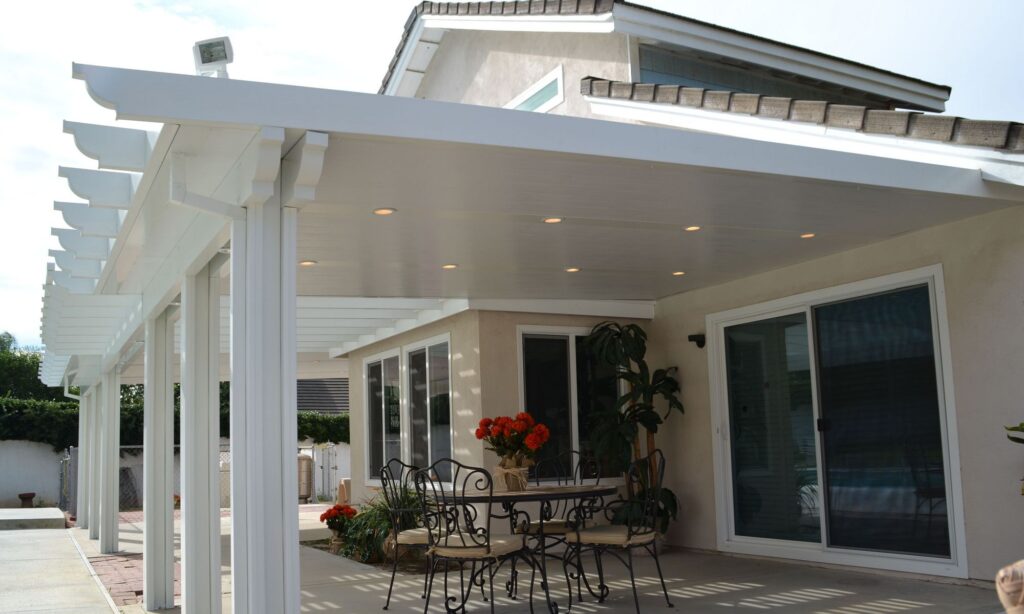Do Aluminum Patio Covers Need Footings?
When it comes to installing an aluminum patio cover, a common question is whether or not it requires footings. The answer is not a simple yes or no as it will depend on the type of cover and various other factors.
For freestanding aluminum patio covers, footings are typically necessary to provide the necessary support and stability. This is especially true if the cover is in an area that receives heavy snow loads or strong winds. Concrete footings are generally the preferred method for securing the posts and preventing the cover from shifting or tipping over.
On the other hand, attached aluminum patio covers that are installed against a house wall may not require separate footings if it is being supported along the entire length of the house-wall. In such cases, the cover can be attached directly to the wall studs using a track for stud walls, which can provide added strength and support.
When it comes to determining the size and type of footings required, several factors come into play. The size and weight of the patio cover, the height of the posts, and the type of soil in which the footings are being installed will all contribute to the design of the footings. Local building codes and restrictions will also need to be considered to ensure compliance and safety.
While aluminum patio covers are lightweight and easy to install, it is important to make sure they have the necessary support to withstand any weather or other stresses it might encounter. Whether it’s a solid or lattice cover, an insulated or non-insulated patio roof, or even a louvered cover system with ceiling fans, the same principles apply in terms of the necessary support.
In conclusion, while not all aluminum patio covers may require independent footings, it is always best to consult with a professional installer or engineer to determine the specific needs for your patio cover based on factors like cover type, post location, and stress limits. By taking the necessary precautions, you can ensure that your aluminum patio cover provides a solid and long-lasting addition to your outdoor space.
Understanding Factors That Impact Footing Needs
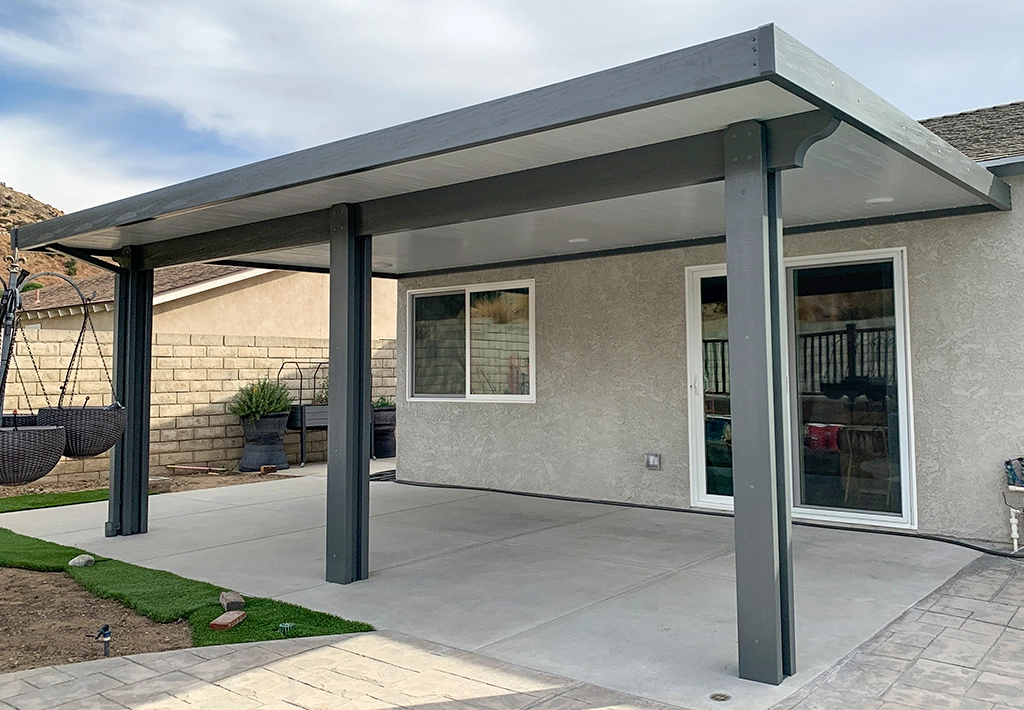
When it comes to installing freestanding aluminum patio covers, one of the most important considerations is determining whether footings are necessary. Footings are the concrete structures that provide support and stability to the posts of your patio cover. While attached covers may not require separate footings, freestanding covers typically do, especially if they are located in areas with heavy wind and snow loads.
So, what factors impact whether footings are necessary for your patio cover? Here are a few to consider:
1. Weight and Size of the Patio Cover
One of the biggest factors impacting whether footings are necessary is the weight and size of the patio cover you intend to install. As a general rule, larger and heavier covers will require more support than lighter, smaller covers. This means that if you are installing a large, solid patio cover, you will likely need more substantial footings than if you were installing a smaller, lattice-style cover.
2. Height of the Posts
The height of the posts of your patio cover can also impact the need for footings. Taller posts will generally require more support to prevent the cover from shifting or toppling over. Conversely, shorter posts may not require as much support.
3. Soil Type
The type of soil in which you are installing the footings can also impact the design and placement of the footings. Softer soils may require wider footings or footings that extend deeper into the ground to ensure stability. Conversely, harder soils may not require as much digging or preparation for the footings.
4. Local Building Codes and Regulations
Finally, it is important to consider local building codes and regulations when determining the need for footings. These regulations may impact the size and design of the footings, the spacing between the posts, and other important elements of your patio cover. Work closely with a qualified contractor or engineer to ensure that your patio cover is compliant with all local regulations.
Overall, understanding the factors that impact footing needs is crucial when installing a freestanding aluminum patio cover. By considering the weight and size of the cover, the height of the posts, the soil type, and local building codes and regulations, you can ensure that your patio cover is safe and stable for years to come.
Snow Loads
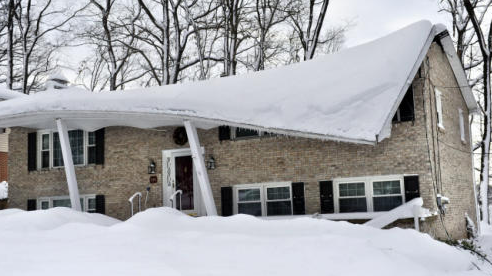
One important factor to consider when designing and installing an aluminum patio cover is the potential impact of snow loads. Depending on where you live, heavy snowfall may be a common occurrence during the winter months. This snow can quickly accumulate on your patio cover and put significant pressure on the structure.
When designing your patio cover, it is crucial to take into account the potential snow load. This load is the weight of the snow that accumulates on your patio cover due to snowfall. The weight of the snow depends on several factors, including the type of snow (wet or dry), the depth of the snow, and the surface area of the patio cover.
A patio cover designed to withstand heavy snow loads will typically have a steeper slope to allow the snow to slide off more easily. Additionally, the spacing between the posts may be closer together to provide additional support and prevent the cover from sagging under the weight of the snow.
It is essential to ensure that your patio cover is installed correctly to minimize the risk of damage from snow loads. A qualified contractor or engineer can help you determine the appropriate design and installation method for your particular needs.
In addition to considering the impact of snow loads on your patio cover, it is also important to consider the potential impact of snow loads on any surrounding structures, such as your house or garage. A heavy snow load on your patio cover could put additional pressure on these structures, potentially causing damage or even collapse.
In conclusion, when designing and installing an aluminum patio cover, it is essential to take into account the potential impact of snow loads. This requires careful consideration of the design, installation method, and spacing between the posts. By working with a qualified contractor or engineer, you can ensure that your patio cover is properly designed to withstand the weight of heavy snow loads and minimize the risk of damage to your property.
Fan Beams
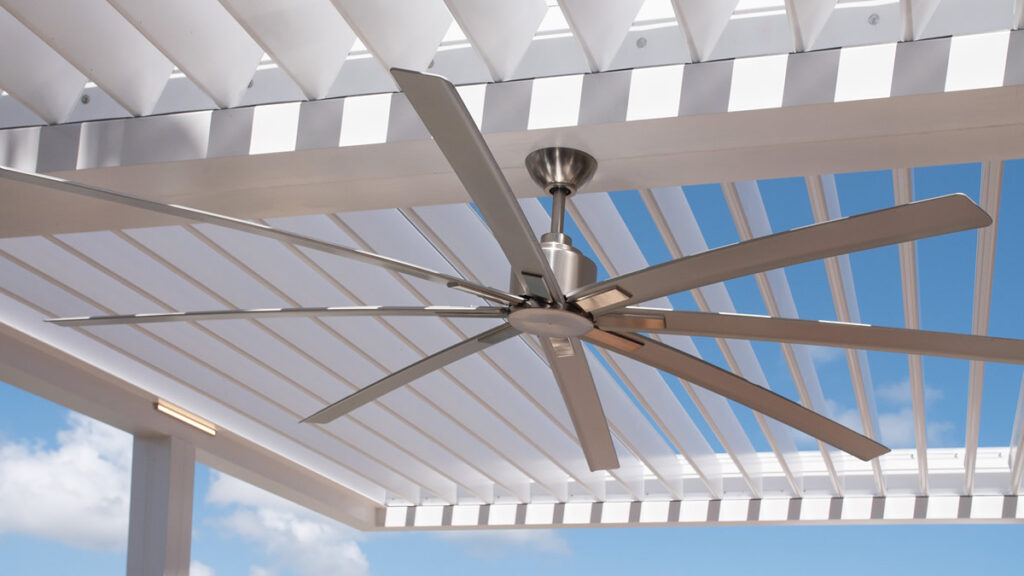
Fan beams are a popular addition to many aluminum patio covers. These beams are designed to provide additional support and enhance the aesthetic appeal of your patio cover. Fan beams are typically located at the midpoint of the cover and radiate outwards in a fan-like shape.
One of the key benefits of fan beams is that they can help distribute the weight of your patio cover more evenly. This can be particularly useful if you live in an area that receives heavy snowfall or where strong winds are common. By dispersing the weight of the cover more evenly, fan beams can help prevent damage to the cover and ensure it remains stable during inclement weather.
Another advantage of fan beams is that they can enhance the overall style of your patio cover. The fan shape offers a unique design element that can complement a variety of different patio cover styles, whether you opt for a lattice or solid cover. Some homeowners even choose to have fan beams custom designed to fit the exact specifications of their patio cover, providing an even more personalized touch.
It is important to note that not all patio covers require fan beams. The need for these beams will depend largely on the size and design of your cover, as well as the climate in your area. A qualified contractor or engineer can help you determine whether fan beams are necessary for your particular patio cover.
If you do decide to include fan beams in your patio cover design, it is essential to choose high-quality materials. Aluminum is a popular option due to its durability, resistance to corrosion, and low maintenance requirements. When selecting fan beams, be sure to choose beams that meet the stress limits required for your patio cover and that are designed to work with your chosen cover type.
In conclusion, fan beams can provide both functional and aesthetic benefits when added to an aluminum patio cover. By helping to distribute weight and adding a unique design element, these beams are a popular addition for those looking to enhance the look and durability of their patio cover.
Concrete Slab or Freestanding Covers
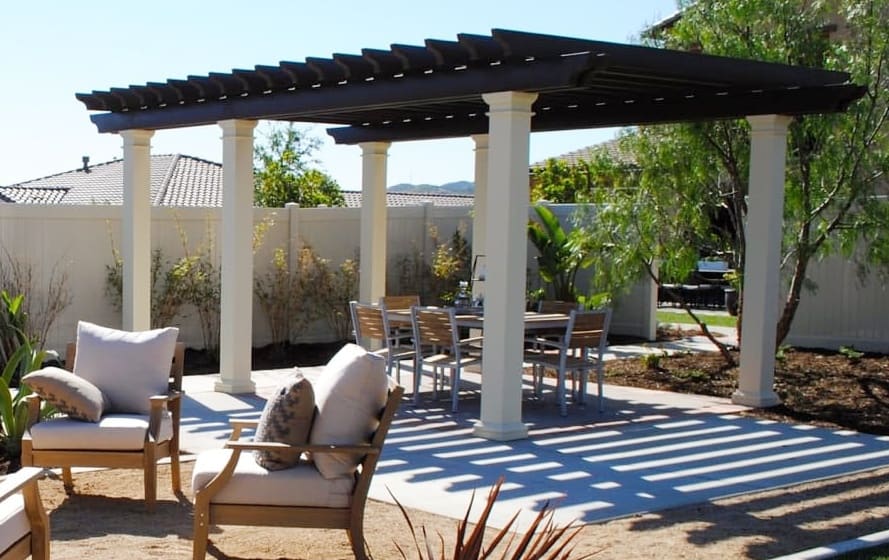
When it comes to designing and constructing a patio cover, two popular options are concrete slab and freestanding covers. Both options have their own unique advantages and drawbacks, so it’s important to carefully consider which one will work best for your specific needs.
Concrete slab patio covers are built directly into the ground, utilizing a concrete slab foundation to support the weight of the structure. This type of cover can be an ideal choice for those that require a more permanent, durable, and stable option. They are typically more aesthetically pleasing and offer a wider range of design options, including different shapes, sizes, and finishes.
One potential drawback to concrete slab patio covers is the cost. They tend to be more expensive due to additional materials and labor required for installation. Also, the concrete slab may require additional reinforcement if your area experiences heavy snow loads or if you plan to install ceiling fans.
On the other hand, freestanding patio covers are not attached to any existing structures or buildings, making them a more versatile option. They can be installed anywhere in your yard and can be easily moved or relocated as your needs change. Freestanding patio covers are also typically less expensive than concrete slab covers, making them a more budget-friendly choice.
One potential drawback to freestanding patio covers is their stability. Without being anchored to an existing structure, they may be more susceptible to wind and weather damage. Additionally, they may not provide as much shade or protection as concrete slab covers.
Ultimately, the decision between a concrete slab or freestanding patio cover will depend on a number of factors, including your budget, climate, and personal preferences. Consulting with a qualified contractor or engineer can help you determine the best option for your specific needs and ensure that your patio cover is both functional and aesthetically pleasing.
Square Footage of the Patio Cover
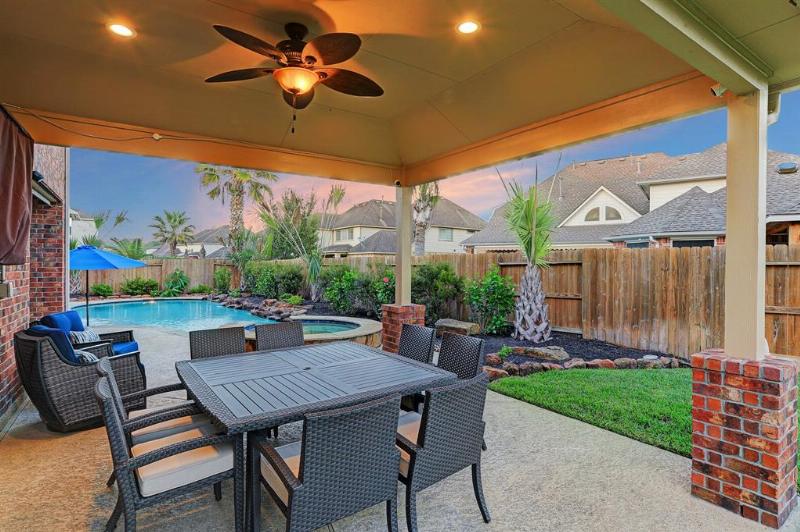
When planning to install a patio cover, determining the appropriate size is crucial to ensure it meets your needs and fits in with your outdoor layout. One essential factor that plays a significant role in the design process is the square footage of the patio cover.
The square footage of a patio cover refers to the measurement of the space below the cover, which is usually determined by multiplying the length and width measurements. Knowing the square footage of your patio cover will help you calculate the amount of material you need and estimate the project’s overall cost.
One common mistake people make when measuring their patio is leaving out any additional space they may want to cover, such as walkways, furniture, or outdoor cooking areas. To avoid this oversight, it’s essential to consider all your needs and plan accordingly to avoid any disappointments once the project is completed.
When choosing a patio cover, you also need to consider the type of cover you want. Solid covers, for example, offer full protection from the sun and rain and tend to be more durable than lattice covers. Lattice covers provide partial shade and offer a more open design that allows light and air to pass through.
Another crucial aspect to keep in mind is the type of material you choose. Aluminum patio covers are becoming increasingly popular due to their durability, affordability, and customizable designs. They’re available in a variety of colors, such as Mojave tan and Sonora beige, and are resistant to rust and moisture damage.
When it comes to determining the square footage of your patio cover, it’s best to consult a professional. They can help you measure accurately and provide recommendations on the best style, material, and design options to meet your specific needs.
In conclusion, calculating the square footage of your patio cover is essential to ensure you make the most out of your outdoor living space. Proper measurement and planning will help you achieve an attractive and functional patio cover that provides the shade, protection, and style that you desire.
Desert Sand and Stress Limits
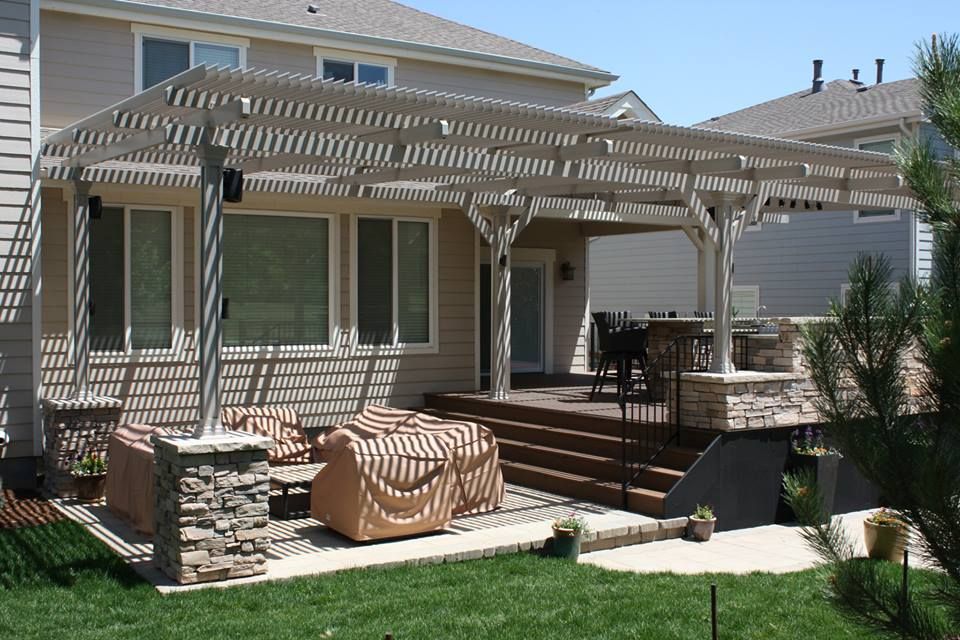
When it comes to choosing the right material for patio covers, stress limits are an essential consideration. Stress limits refer to the maximum amount of weight or force a material can withstand before it starts to deform or break.
Desert Sand is a popular color choice for aluminum patio covers due to its warm and natural look that blends well with outdoor landscapes. But does this color choice affect the stress limits of your patio cover?
The short answer is no. The color of an aluminum patio cover does not affect the stress limits of the material. However, it’s essential to choose a high-quality aluminum sheet that meets safety standards and can withstand various weather conditions.
Stress limits depend on several factors, including the type of material, thickness, and quality of construction. Aluminum patio covers are known for their durability and high-strength-to-weight ratio. They’re also resistant to rust and corrosion, making them an excellent choice for outdoor use.
When selecting an aluminum patio cover, it’s crucial to consider the intended use and weight-bearing requirements. For example, if you plan to install ceiling fans or lighting fixtures on your patio cover, you may need a higher weight-bearing capacity to avoid stress on the structure.
In summary, the color of an aluminum patio cover does not affect its stress limits. Still, it’s crucial to select a high-quality material that meets safety standards and can withstand various weather conditions. Consulting with a professional can help you determine the best material and design options to meet your specific needs.
Transparent Plastic and Aluminum Sheet Options
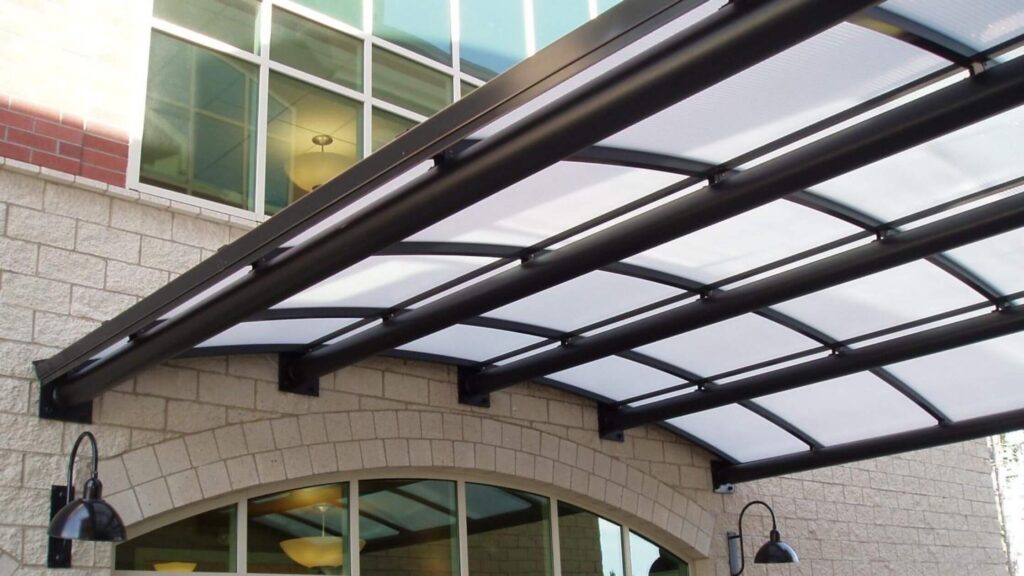
When it comes to patio covers, homeowners have several material options to choose from. Two popular options are transparent plastic and aluminum sheets. Each offers unique benefits and can help enhance the overall look and functionality of your outdoor space.
Transparent plastic patio covers are a great choice for those looking to enjoy the beauty of natural light while still providing shelter from the elements. These covers are typically made of polycarbonate, a durable and lightweight material that is also resistant to shattering and UV radiation. They come in various styles, including clear, tinted, and textured finishes, allowing you to choose the level of privacy and light filtering that suits your needs.
One significant advantage of transparent plastic covers is their ability to withstand extreme weather conditions. They’re designed to be impact-resistant and can handle strong winds, heavy rain, and even hail. Additionally, they’re low maintenance and easy to clean, providing an excellent option for homeowners seeking convenient solutions for their outdoor space.
Another option for patio covers is aluminum sheets. Like transparent plastic covers, aluminum sheets also come in various styles, including lattice, solid, and insulated options. They are known for their strength, durability, and resistance to rust and corrosion, making them a popular choice for outdoor use.
Aluminum sheets can also be customized to suit your needs, including the type of finish and color. They come in an array of colors, including Mojave Tan and Sonora Beige, allowing you to choose the best option to complement your outdoor space’s design. Additionally, they offer a great way to add a decorative element to your patio, with intricate designs and fan beams available as well.
One thing to keep in mind with aluminum sheets is their weight-bearing capacity. While they’re strong and durable, they can bend or break if not installed correctly. Therefore, it’s crucial to ensure the patio cover is supported by a solid header beam and bolted into a stable post location.
In conclusion, transparent plastic and aluminum sheet options offer homeowners great solutions for their patio cover needs. They both offer unique benefits and can be customized to suit your style and functionality requirements. It’s essential to consider the intended use and weight-bearing requirements of your patio cover to select the best material option for your outdoor space.
The Type of Patio Cover Structure

The type of patio cover structure you choose for your outdoor space can drastically impact its functionality and aesthetic appeal. With so many options available, it can be overwhelming to determine what’s best for your needs. However, by understanding the different types of patio covers, you can make an informed decision on which one will work best for your home.
One popular option is the freestanding patio cover. This structure stands independently from the house, providing ample space for outdoor entertaining and relaxation. Freestanding patio covers typically require concrete footings or a concrete slab to support their weight-bearing capabilities. They come in a variety of styles, including solid covers, lattice covers, and fan beam covers. Freestanding patio covers are perfect for creating a backyard oasis and can be customized to fit your exact needs and style preferences.
Attached patio covers, on the other hand, are designed to attach directly to the house. This type of patio cover structure is ideal for those looking to extend their living space seamlessly from their indoor space to their outdoor space. Attached patio covers require the use of wall studs and headers to attach the structure to the house properly. This type of patio cover typically provides more shade and shelter than its freestanding counterpart, making it an excellent choice for homeowners who frequently entertain.
Patio cover structures can also be categorized by their design. Traditional patio covers are designed with a flat roof, allowing for a simple and sleek look. However, modern patio covers, such as louvered patio cover systems, provide a bit more versatility by allowing for adjustable slats that can be opened and closed to control light and shade. These types of covers are perfect for those who want a patio cover structure that provides both shade and natural light.
When choosing a patio cover structure, it’s important to consider the climate and weather conditions in your area. For instance, if you live in an area that receives heavy snow loads, you may need a patio cover structure that is designed to handle such conditions. Stress limits and jacking patio covers are designed to provide extra support and protection from the elements.
In conclusion, the type of patio cover structure you choose depends on your specific needs. Whether you’re looking for additional shade, a place to entertain guests, or an extension of your living space, there’s a patio cover structure available to meet your needs. By considering the style, design, and weather-resistant capabilities, you can choose a patio cover structure that will provide years of enjoyment and functionality for your outdoor space.
Post Location and Header Beam Requirements
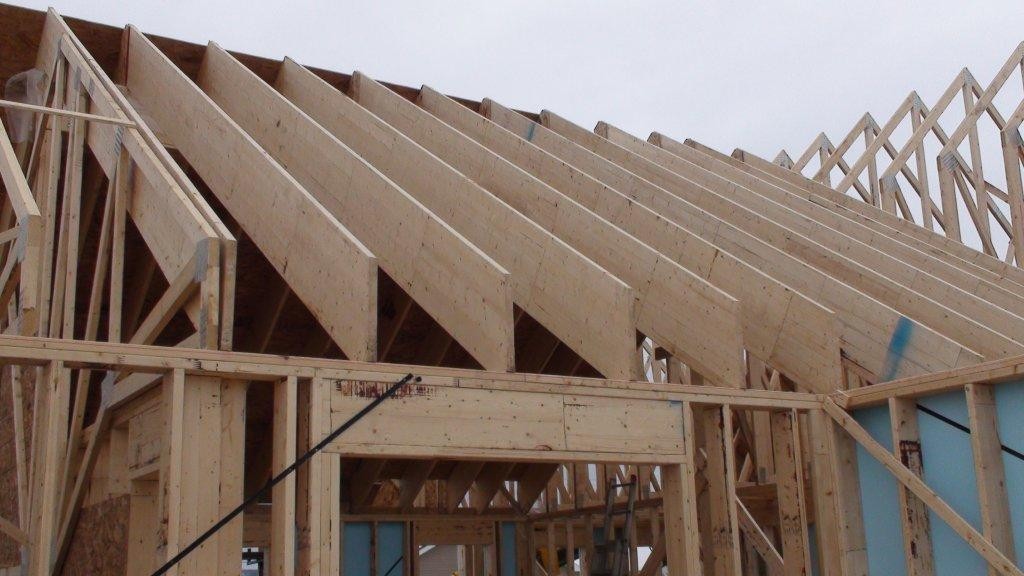
When it comes to building a patio cover, one of the most important considerations is the location and placement of the posts and header beam. These two components are essential for providing support and stability to the overall structure, ensuring that it can withstand the elements and remain standing for years to come.
The first step in determining the location of the posts and header beam is to consider the size and shape of your patio area. In general, you’ll want to place the posts at least 8 feet apart to ensure proper support and stability. The header beam should be installed parallel to the house and should be securely attached to the house wall.
One important factor to keep in mind when planning your post location is to make sure that you avoid any underground utilities or pipes. Be sure to consult with your local utility company or a professional contractor to determine the location of any underground obstructions before beginning construction.
When it comes to choosing the type of materials for your header beam, there are a number of options available. Many homeowners opt for pressure-treated lumber or a steel beam, as these materials offer durability and strength. The size and thickness of your header beam will depend on the size and weight of your patio cover structure, as well as the spacing of your posts.
In addition to ensuring proper post and header beam placement, it’s also important to consider the overall design and aesthetic of your patio cover. Whether you opt for a traditional solid or lattice-style cover, or a more modern and sleek design, there are a variety of options available to customize your patio cover to fit your unique style and needs.
In summary, post location and header beam requirements are essential considerations when building a patio cover. By carefully planning and selecting the appropriate materials and placement, you can ensure that your patio cover provides the necessary support and stability for years of enjoyment and relaxation in your outdoor space. Be sure to consult with a professional contractor or expert in patio cover construction for additional guidance and advice.
Hammer Drill Considerations for Concrete Footings
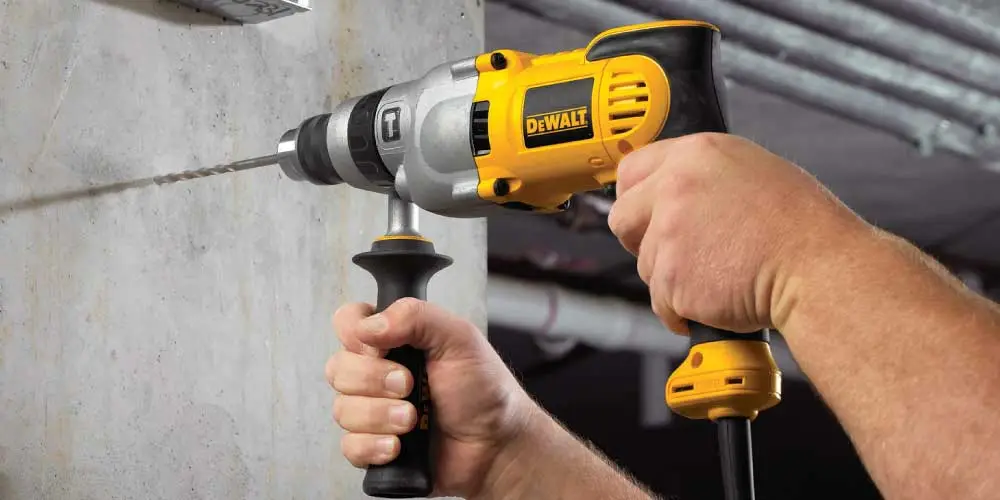
When it comes to building a patio cover, one of the most important considerations is the foundation or footing. Concrete footings are a popular choice for their durability and ability to withstand the weight of a patio cover. But before you can pour your concrete footings, you’ll need to drill holes into the ground. This is where a hammer drill comes in handy.
A hammer drill is a power tool that is designed to drill through tough materials like concrete, stone, and brick. Unlike a regular drill, a hammer drill incorporates a pounding or hammering motion that helps to break up the hard surface as it drills. When it comes to drilling into concrete, a hammer drill is the tool of choice.
But not all hammer drills are created equal. When choosing a hammer drill for your concrete footings, there are a few things to consider:
– Power: The amount of power a hammer drill has will determine how easily it can penetrate the concrete. Look for a hammer drill with at least 7 amps of power or more for drilling into concrete.
– Speed: The speed of a hammer drill is measured in revolutions per minute (RPM). For drilling into concrete, you’ll want a hammer drill with variable speed control so you can adjust the RPMs for optimal drilling performance.
– Chuck size: The chuck is the part of the drill that holds the drill bit in place. Look for a hammer drill with a chuck that can accommodate larger diameter bits for drilling deeper holes.
– Vibration control: Drilling into concrete can be a jarring experience, but a hammer drill with built-in vibration control can help reduce fatigue and make the job more comfortable.
When drilling into concrete, it’s also important to use the right type of drill bit. Look for a masonry bit that is designed specifically for drilling into hard surfaces like concrete. And as with any power tool, be sure to wear protective gear like safety glasses and gloves to keep yourself safe.
By choosing the right hammer drill for your concrete footings and taking the proper safety precautions, you can ensure that your patio cover is built on a solid and stable foundation that will stand the test of time.
Choosing Colors for an Aluminum Patio Cover

Choosing the right color for your aluminum patio cover can be an important decision. After all, this is a feature that will be visible from both the inside and outside of your home, and you’ll want to make sure you pick a color that complements your existing outdoor decor and adds to the overall visual appeal of your home.
One of the most popular colors for aluminum patio covers is desert sand. This warm, earthy tone is versatile and works well with a wide range of outdoor color schemes. Mojave tan and Sonora beige are two other popular color choices for aluminum patio covers, both of which offer a lighter, more neutral palette.
If you’re looking for a bolder, more eye-catching option, consider a lattice cover in a brighter shade like red or blue. A solid cover in a bold color can also be a great way to add visual interest to your outdoor space.
Another factor to consider when choosing the color for your aluminum patio cover is the climate you live in. Lighter colors tend to reflect sunlight and keep the area underneath cooler, which can be a particularly important consideration if you live in a hot, sunny location. On the other hand, darker colors tend to absorb heat and may be a better choice if you live in a cooler climate.
When selecting your aluminum patio cover, be sure to also consider the type of finish you prefer. A glossy finish can add shine and reflect more light, while a matte finish can give a more subdued, natural look.
Ultimately, the choice of color and finish for your aluminum patio cover will depend on your personal preference and the overall aesthetic of your home. With all of the different options available, you’re sure to find a combination that perfectly suits your needs and style.
Popular Color Options: Mojave Tan, Sonora Beige, and More
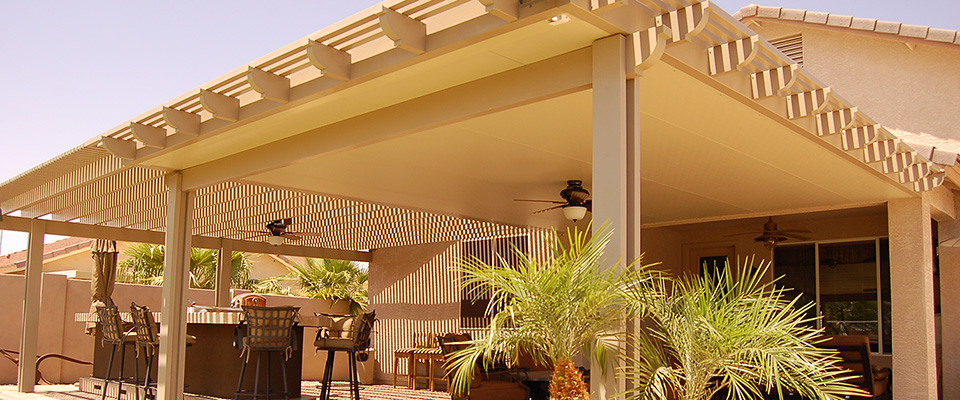
When considering an aluminum patio cover for your outdoor space, there are many factors to consider. From the size and style to the type of cover and its features, there’s a lot to think about. However, one of the most important decisions you’ll make when choosing your aluminum patio cover is the color.
One of the most popular color options for aluminum patio covers is Mojave tan. This warm, neutral color blends well with almost any outdoor decor, from earthy browns and greens to bold pops of color. The Mojave tan also works well with a variety of materials, such as wood, stone, and brick. It’s a versatile color that adds a touch of natural warmth to your space.
Another popular color option for aluminum patio covers is Sonora beige. This soft, light hue is perfect for creating a tranquil, peaceful outdoor space. It works well with light-colored outdoor furniture and accessories, such as white or beige cushions and throw pillows. Sonora beige is an excellent choice if you want your patio to feel bright and airy without overwhelming the space.
If you’re looking for a bolder, more vibrant color option for your patio cover, there are plenty of choices to consider. Red or blue shades can add a splash of drama to your outdoor space, while brighter greens and oranges can create a tropical oasis vibe. Solid covers in bold colors are ideal for those who want their patio to stand out and make a statement.
When selecting the color for your aluminum patio cover, it’s important to consider not only your personal style but also the climate you live in. Lighter colors tend to reflect sunlight and keep the area underneath cooler, making them a sensible choice for those who live in hot, sunny locations. Conversely, darker colors tend to absorb more heat and are ideal for those living in cooler climates.
In summary, when it comes to selecting the color for your aluminum patio cover, there are plenty of options to choose from. From the warm, neutral tones of Mojave tan and Sonora beige to bolder shades of red and blue, there’s a color to suit every style and preference. Consider your climate, personal taste, and outdoor decor when making your decision, and you’re sure to find the perfect aluminum patio cover color for your space.
Pros and Cons of Installing an Aluminum Patio Cover with Footings
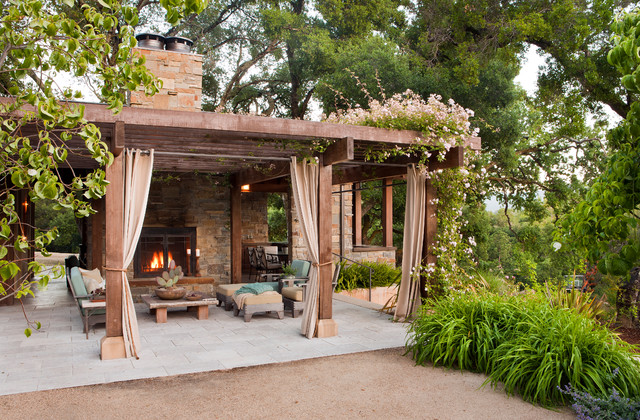
Aluminum patio covers are known for their durability, low maintenance, and affordability. However, when it comes to installation, there are several options to consider, including whether or not footings are necessary.
Installing an aluminum patio cover with footings has its pros and cons. Here are some of the advantages and disadvantages.
Pros:
– Footings provide a sturdy foundation for the patio cover, ensuring it can withstand harsh weather conditions, such as strong winds and heavy snow loads.
– Footings can prevent the patio cover from sinking or shifting over time due to soil movement or settling.
– Footings distribute the weight of the structure evenly, preventing stress and wear on particular areas of the patio cover.
– Footings can provide additional support for ceiling fans, lighting fixtures, or other accessories that may be attached to the patio cover.
Cons:
– Installing footings requires more work and materials than freestanding covers, such as concrete slabs. This can add to the overall cost of the project.
– Footings may not be necessary in areas with stable soil conditions or if the patio cover is lightweight and isn’t subject to heavy winds or snow loads.
– Digging holes for footings can disrupt landscaping or require additional permits if there are underground utilities or obstructions.
– Footings may limit the flexibility of the patio cover’s design or placement if they need to be positioned in specific locations.
In conclusion, when deciding to install an aluminum patio cover with footings, it’s crucial to consider the specific needs of your outdoor space, the climate in your area, and your budget. While footings can provide additional stability and support, they may not always be necessary, and the additional cost and effort should be weighed against the potential benefits. Ultimately, the type of patio cover you choose should depend on your preferences, needs, and budget.

